Fine rain falls on the fluffy mountains of the eternity bay, in the Saguenay fjord. On the bridge of the ship, the crew activates around an intriguing device with articulated arms, sensors and cameras. Astrid, the remote-controlled underwater vehicle-or ROV, for Remotely operated vehicle – is about to dive.
Continuing remotely from a computer, this device transmits in real time scientific images and data on seabed. A technician gives the latest radio instructions, while a crane sets in motion, his long tense cable guiding the machine towards the sea. Slowly, the ROV is raised and immersed in the water.
We are on board theAmundsena ice caregiver from the Canadian Coast Guard.
A true flagship of Nordic research, this ship is used, several months a year, for scientific expeditions. In addition to a vast arsenal of research equipment, it has laboratories and infrastructure designed to accommodate oceanographers, climatologists, marine geologists, glaciologists and other researchers from Canada and international.
The scientific mission of the icebreaker is managed by the organization Amundsen Science, at Laval University, in collaboration with the Coast Guard. Each summer, in June, this outing on the Saguenay river makes it possible to train the staff and to test the equipment that will be deployed in the Arctic.
Such a stay is well prepared upstream. “In the fall, research programs apply to board on board. During the winter, we plan the season with the Coast Guard. Then come the work on the ship to install our scientific equipment, ”explains Alexandre Forest, executive director of Amundsen Science.

L’Amundsen In the direction of the Saguenay Fjord, where 4 days of trials at sea are waiting for it.
– Yan Doublet – Laval University
A huge floating laboratory
For the author of these lines, it was a second boarding aboard theAmundsen. Even after a first stay in 2021, the magnitude of the ship remains striking. The 98-meter-long icebreaker impresses by its maze filled with advanced equipment and the antlell atmosphere that reigns there.
From sailors to research professionals, everyone is busy with their task, contributing to the deployment of scientific devices. Nothing is left to chance. On board, each gesture counts, every minute too.
Behind this logistics set to the nearest millimeter is Anissa Merzouk, coordinator of the oceanographic research of Amundsen Science. A real orchestra head, it juggles between the objectives of the research programs and the reality on the ground. “Each year brings its share of challenges, but there is never nothing insurmountable. It is our philosophy. There is always a solution, a means of deploying a new device or going to study a new place, “she says, while keeping the safety of the crew at the heart of its priorities.
Nordic communities, key partner
Freshly returned from sea tests on June 25, the ship will take off for its scientific expedition which will lead it to Goose Bay, in Newfoundland and Labrador. Then, head on Iqaluit, resolute bay, the islands of the Queen-Élizabeth and finally Tuvaijuittuq, with several stops in Inuite communities. The return to the Port of Quebec is scheduled for October 20.
From Blanc-Sablon to the borders of the Arctic archipelago, including Lake Melville, several zones will be studied for the first time by theAmundsen. “We can follow biological productivity as we go back to the north, thanks to various research programs each with their objectives. It will be fantastic to be able to harvest so much data, ”says Alexandre Forest.
Because they live in the Nordic territory and are the first concerned, the Inuite communities play an important role in the scientific missions of theAmundsen. In the spring, a tour of the northern villages made it possible to cross knowledge and to explore the possibilities of collaboration. To support this approach, a person has also been specially engaged in order to make the link with the communities and strengthen partnerships.
— Alexandre Forest, Executive Director of Amundsen Science

Guillaume Blais checks the latest adjustments of the benthic mini-chamber before its launching. This instrument makes it possible to analyze sediments and sea water.
– Yan Doublet – Laval University
Departure for the unknown
Guillaume Blais will take part in the third segment of the expedition, which will crisscross the baffin bay. Doctoral student under the supervision of Professor Philippe Archambault of the Faculty of Science and Engineering, he is interested in the carbon rate in the fjords. “It will be my fourth and last stay on theAmundsenhe says. I can’t wait to be there. You never know what to expect: there is always a part of unforeseen. I am a little feverish. “
Certainly, he would not change his decor for anything in the world. “I am lucky to work in the fjords, where the landscapes are wonderful. There is no tree, just rock. Working with geologists on board, it helps to better understand the history of these training courses. It’s exciting. “
Track down the invisible
Oceanographer chemist at the University of Victoria, Jay Cullen analyzes the metals present in Arctic Water: Iron, Zinc, Manganese, Cadmium, Lead. Insidious essential or polluting micronutrients, these substances directly affect the health of marine ecosystems.
“I study the chemical forms that these elements take, their concentrations, as well as the potential impact of human activities,” says the one who scrutinizes the waters of the Queen-Élizabeth islands, a region covered with thick ice and particularly vulnerable to climate change.
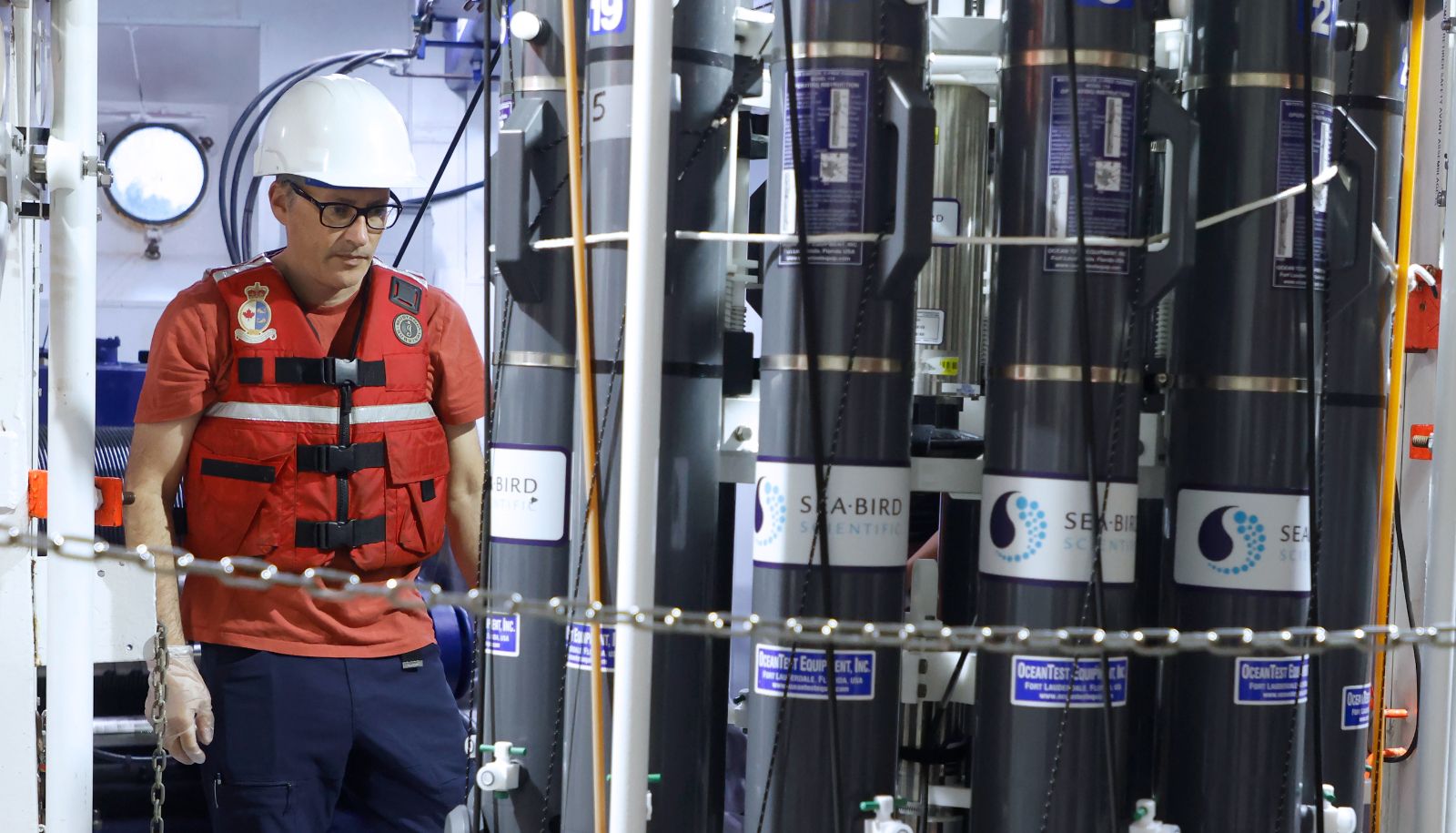
For his work, Jay Cullen uses a rosette, a device with non -metallic bottles, avoiding any cross contamination, which take samples of water at different depths. The opening and closing of the bottles are triggered from the control room thanks to a kevlar cable with a common thread.
– Yan Doublet – Laval University
The detection of metal traces is a work that requires meticulousness and precision. To analyze the samples, the team created a “clean laboratory” on the ship, a first in Canada. This immaculate white space and continuously filled with filtered air prevents cross -contamination with pollutants such as dust and microbes. To enter, you have to carry a tracksuit and respect a whole series of measures. “It is definitely the cleanest place on theAmundsen. After the kitchens, of course! ”Says the researcher, laughing.
These shadow trades
On board the icebreaker, another mission is accomplished far from the research equipment: operating the ship. In the bowels of the building, where the heat of the engines reign and the constant rumble of the machines, Martin Desaulniers and Richard Blanchette ensure the good condition of the propulsion, energy and safety systems.
In the North, few spare parts at hand: everything must be reliable, autonomous … and ingenious. L’Amundsena real concentrate of technology, reuses the heat of its engines and produces its own drinking water – 16,000 liters per day – from sea water.
“To do mechanics on a ship, you have to be creative and resourceful. It is a playground for those who like to touch everything. When a tool is missing, it is made. We do not always know where we are going, but we organize ourselves to get there, ”says Martin Desaulniers.
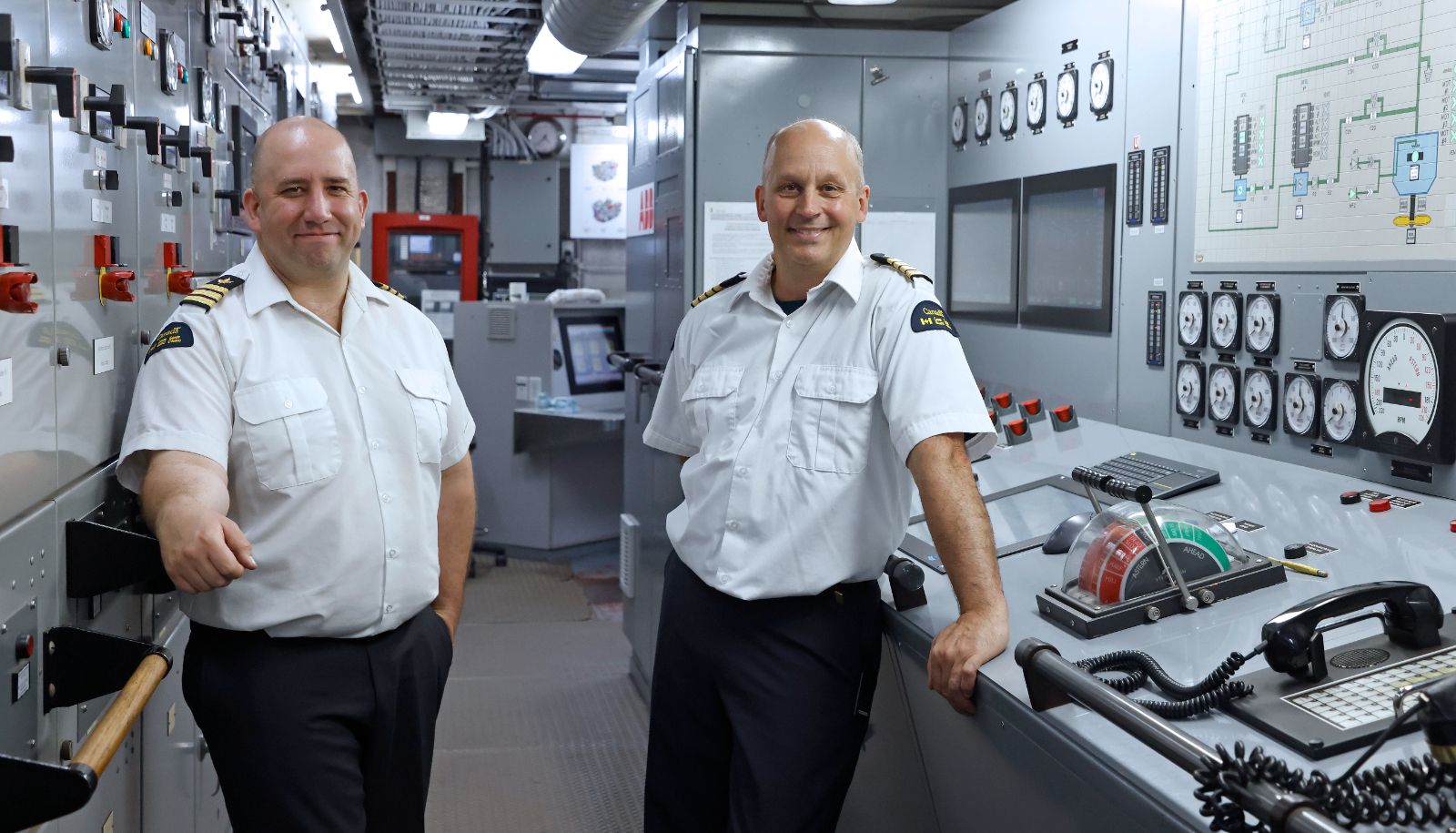
Richard Blanchette, senior mechanic, and Martin Desaulniers, chief mechanic, were not asked to show the behind the scenes of the ship.
– Yan Doublet – Laval University
Another essential job on board: that of cook. With some 80 crew members who work 24 hours a day, it takes a well -oiled organization to feed the troops in the Arctic, an isolated environment where supplies is rare.
In the kitchens of the ship, chef Yann Robert and his small team take care to offer comforting meals, which restore energy and morale. And he doesn’t do things by half. His beef bib, melting and tasty, and his wrap In tofu a bit spicy remain in many memories.
“All our dishes are homemade. The veal funds, the broths, the soups: nothing comes from the powder, everything is prepared from zero, he underlines. It takes time, but that’s what motivates me. It is even written in our description of tasks: we are here to make the crew happy. ”
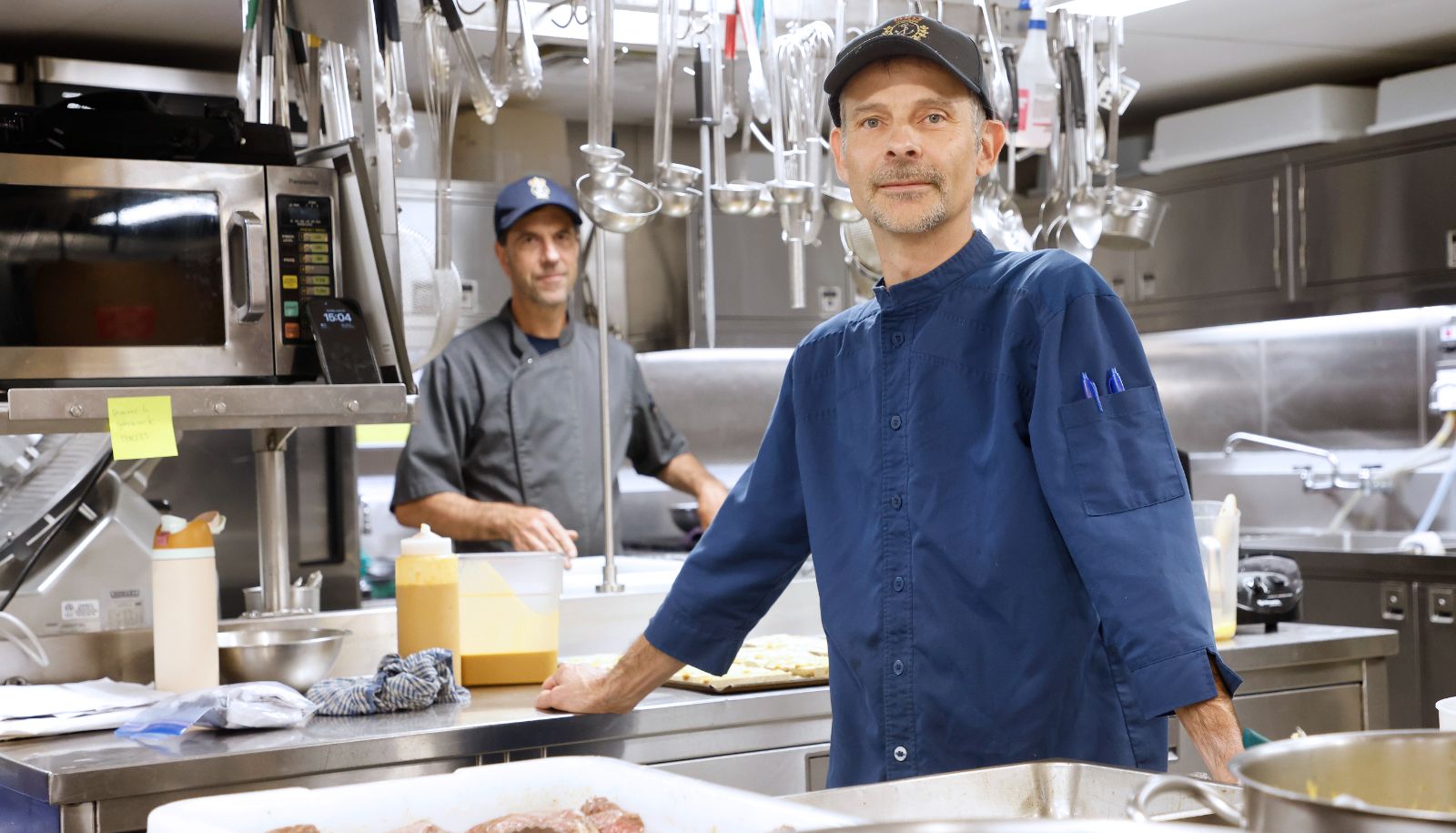
Yann Robert worked in the classical catering world for 35 years before joining the Coast Guard in 2017. We see it here with Andrew Wall, his precious assistant.
– Yan Doublet – Laval University
A most striking experience
The finished sea tests, it is difficult to describe the richness of lived experience. Stay aboard theAmundseneven for a few days, it is to dive into a rigorously planned workplace, where sciences, logistics and technical know-how are stopped. It is also a concrete overview of the efforts made to better understand this fragile world, in full mutation, that is the North.

Reporter Matthieu Dessureault and photographer Yan Doublet
– Véronique Rochefort – Amundsen Science
L’Amundsen in a few figures
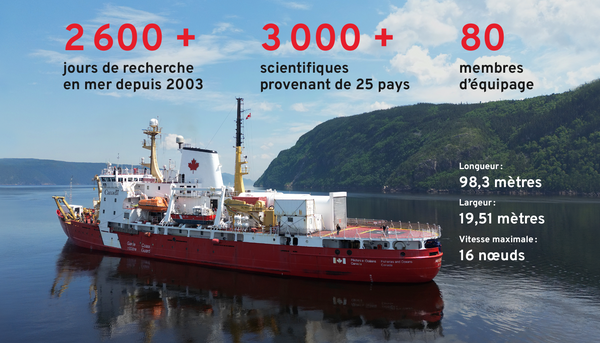
– Photo: Yan Doublet / Graphic assembly: Johanne Côté – Laval University
Sea tests in 10 photos
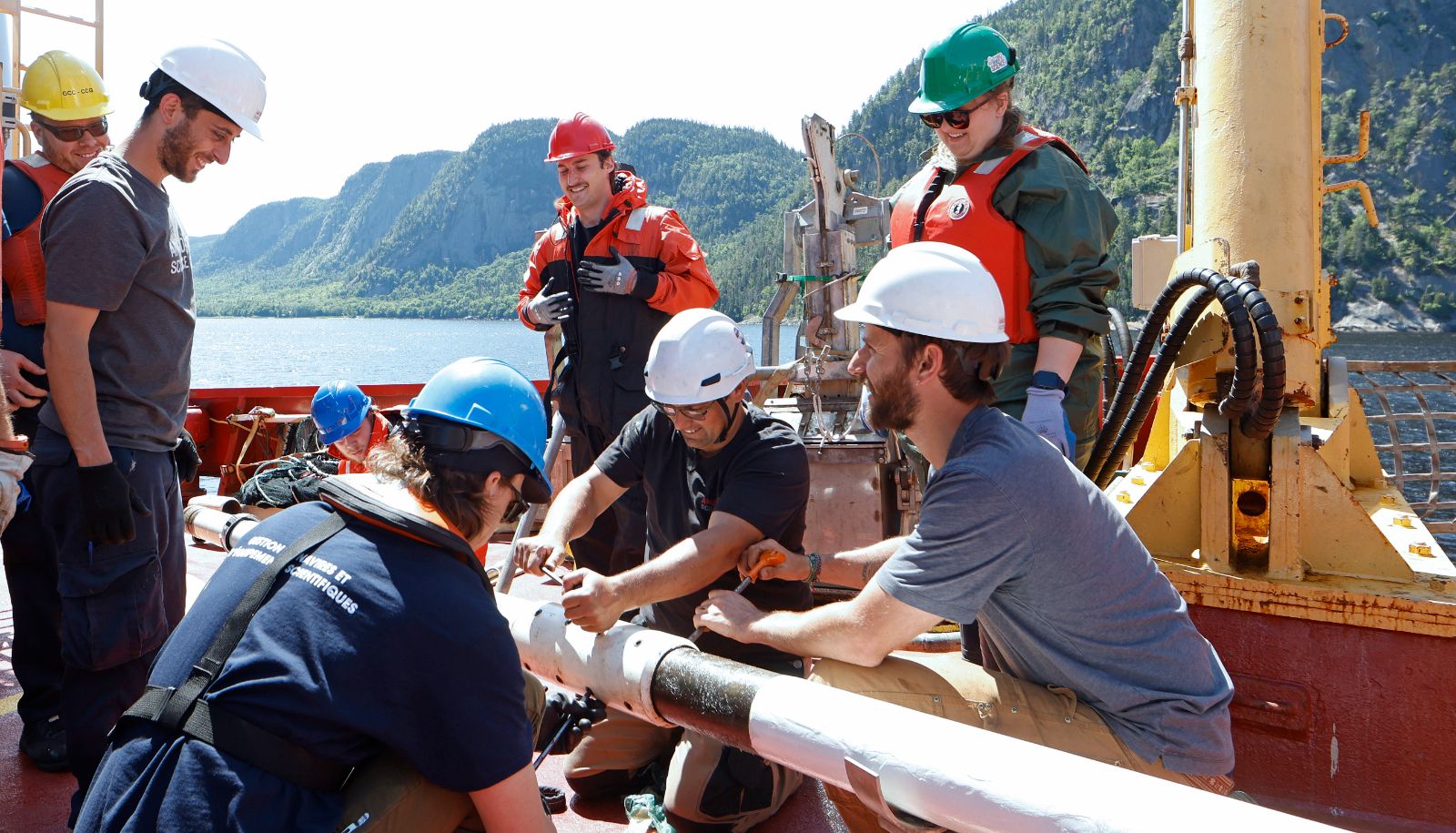
1/10

